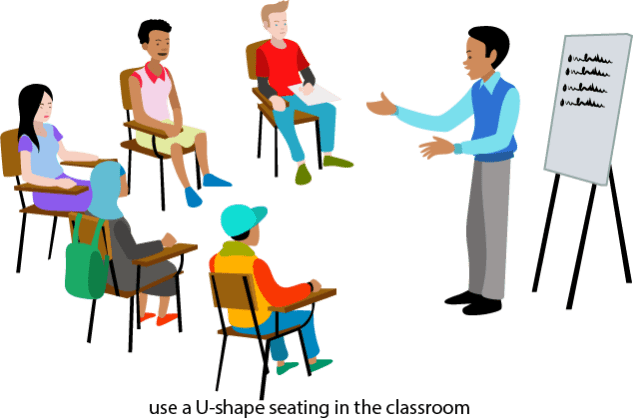What you can find in this section
What is a hearing impairment?
Depending on the severity of hearing impairment, it may also affect speech, particularly if it begins before a child acquires spoken language.
Categories of hearing impairments
Hard of hearing:
- Mild: difficulty hearing soft sounds, such as whispering. Can benefit from hearing aids.
- Moderate: difficulty hearing during conversations. Can benefit from hearing aids.
- Severe: can only hear loud sounds.
Deafness: cannot hear any sound at all. Cannot benefit from hearing aids.
How to refer to someone with a hearing impairment
Avoid using
- Invalid
- Deaf and dumb
- Deaf - mute
Instead use:
- Person with a hearing impairment
- Deaf or hard of hearing
- Person who is deaf or hard of hearing
This ‘person-first’ language has received wide acceptance among persons with disabilities and their representative organisations.
In some countries they prefer to be called “sign language users” – however, this is problematic in that not all sign language users are persons with hearing impairment.
There are also many local derogatory names used in communities and at schools to refer to people with hearing impairments. Such names affect their self-esteem and personal motivation and should be avoided.
How to create an inclusive learning environment for students with hearing impairments
An inclusive learning environment for students with hearing impairments is one where they can socialize with fellow students without stigma or discrimination, or being called derogatory names, one where they can easily communicate in a language they understand, access IEC materials and are able to participate in all activities at the school.
General advice on how to communicate with someone who has a hearing impairment
- Get the attention of the Deaf person. If he or she does not react, gently touch their arm or shoulder, or wave.
- Ask the person how he or she prefers to communicate.
- Face the person. People with hearing impairment want to see your face so they may read your lips and see your facial expression. Get on the same level as the person (e.g., sit if the person is sitting). Do not put your hand in front of your face.
- Move to a quiet area so there is no or little background noise.
- Stand nearby so the person who is hard-of-hearing may hear you in the best possible way.
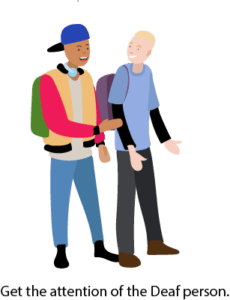
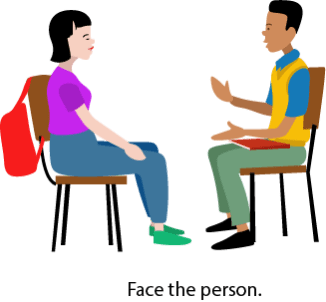
- Have good lighting so he or she can see you clearly.
- Speak clearly and normally, or just louder for someone who is hard of hearing. Do not shout.
- Check if the person has understood, for example by asking feedback.
- Repeat key messages e.g., by writing them down.
- Use facial and body expressions to support what you say.
- Speak directly to the person. Do not direct your speaking to the family member or interpreter of the Deaf person.
- In your building, have clear signs to help those that are Deaf and hard-of-hearing identify where to go.
- Provide information in writing if the person can read and write. Have a pen and a paper with you just in case you need to communicate in writing.

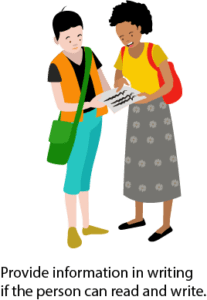
Most importantly, ask the person how they want to be addressed, and how they want to be supported.
International Sign Language Alphabet
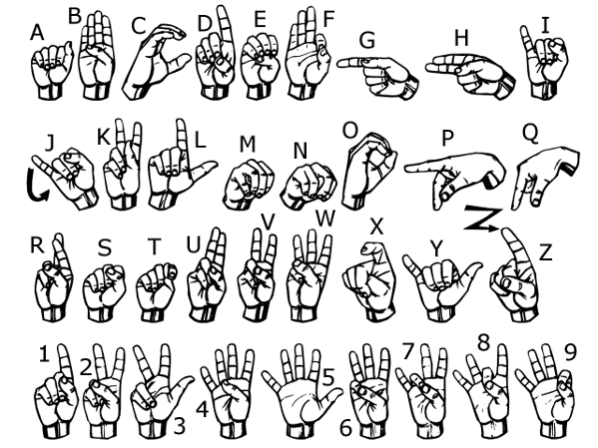
Specific advice on including of students with hearing impairments in the classroom/institutions of higher learning
- Look for sign language support – the sign language interpreters can help to support students with hearing impairments who know sign language. Maintain eye contact with the person when you are talking to them (not their sign language interpreter).
- Be willing to repeat information when talking to a student who is Deaf or hard-of-hearing. If you do not understand what the person said, ask him or her to repeat it.
- Be sure you have the attention of the person, give a visible signal or tap his or her shoulder, and face him or her before starting to talk.
- Do not use exaggerated lip movements.
- Use short clear sentences and do not speak too fast for Hard-of-Hearing.
- Do not talk with your hand in front of your mouth as some Deaf persons are aided by lip-reading.
- Minimize or eliminate irrelevant visible and audible distractions when talking to the Deaf students.
- If a student with a hearing impairment does not understand your comments or directions, repeat, rephrase, write or demonstrate them with body movement or pictures or drawings.
- If you are not using a qualified sign language interpreter, use mimics, gesture and natural signs
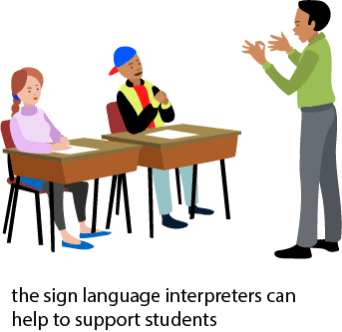
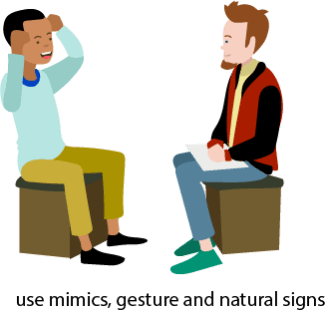
- Deaf students may have difficulty with spelling and grammar (the grammar of sign language is completely different from the grammar of spoken language) so focus more on content than grammar.
- If possible, use a U-shape seating in the classroom so the student can see/observe other their peers.
- Take time for face-to-face or one-on-one instruction.
- Write down key information or notes on the board/PowerPoint before the lesson to avoid having your back to the students when talking. Key information could include key concepts. Alternatively, PowerPoint with illustrations could be used regardless of whether you have a sign language interpreter or not.
